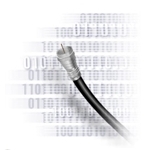 Decentralization is a concept that has gained credence, proponents and adherents as it has spread, providing the basis for strategic plans across a wide range of industries, including cable and telecoms. Digital information and communications systems architectures continue evolving, in turn providing the basis for decentralization as a concept, as well as serving as its enabling technology.
Decentralization is a concept that has gained credence, proponents and adherents as it has spread, providing the basis for strategic plans across a wide range of industries, including cable and telecoms. Digital information and communications systems architectures continue evolving, in turn providing the basis for decentralization as a concept, as well as serving as its enabling technology.
The decentralization trend is well under way in the global cable industry, according to new market research from IHS Infonetics. Surveying cable service providers representing 87 percent of industry capital expenditures worldwide, IHS found that 4 in 10 (42 percent) plan to deploy distributed access architectures (DAA) by 2017.
Interviewees listed DOCSIS remote broadband IP processing R-PHY, R-MACPHY and R-CCAP (Converged Cable Access Platform) as their main choices when it comes to deploying remote DAAs, according to IHS’s ¨CCAP, DOCSIS 3.1, and Distributed Access Strategies and Vendor Leadership: Global Cable Operator Survey.¨
Migration to DOCSIS 3.1
“Cable operators are clearly committed to both DOCSIS 3.1 and distributed access architectures to increase bandwidth in their access networks,¨IHS research director for broadband access and pay-TV Jeff Heynen was quoted as saying.
¨Though there is no consensus yet on which distributed access technology most will use, there’s no question they will distribute some portion of the DOCSIS layer to their optical nodes.”
DOCSIS 3.1 is widely seen as cable’s answer to gigabit capable FTTH services, which are increasingly being deployed by telco and municipal competitors. DOCSIS 3.1 promises to give cable operators capabilities of up to 10 Gbps downstream bandwidth.
Migration to DAA is touted as a driver of innovation and the means for cable operators to boost network capacity and break through bottlenecks in the delivery of existing and the introduction of new bandwidth-intensive pay-TV content and services.
It’s also said to allow for greater flexibility in content and service delivery – a key competitive advantage for OTT service providers – pay-TV technology developer Pace explains. Moving the digital radio-frequency (RF) interface from the head-end to network nodes is the first, critical step in building DAAs.
Other key report takeaways include:
- The operational benefits cable operators are reaping from moving from CMTS to CCAP are just the first step in a long-term transition to distributing data processing capabilities throughout the network.
- Survey respondents, on average, say that about a third of their residential subscribers will be passed by DOCSIS 3.1-enabled head-ends by April 2017;
- By 2017, nearly half of respondents will have return path (upstream) frequencies of 86–100MHz, while a quarter will have 101–200MHz of return path spectrum.


